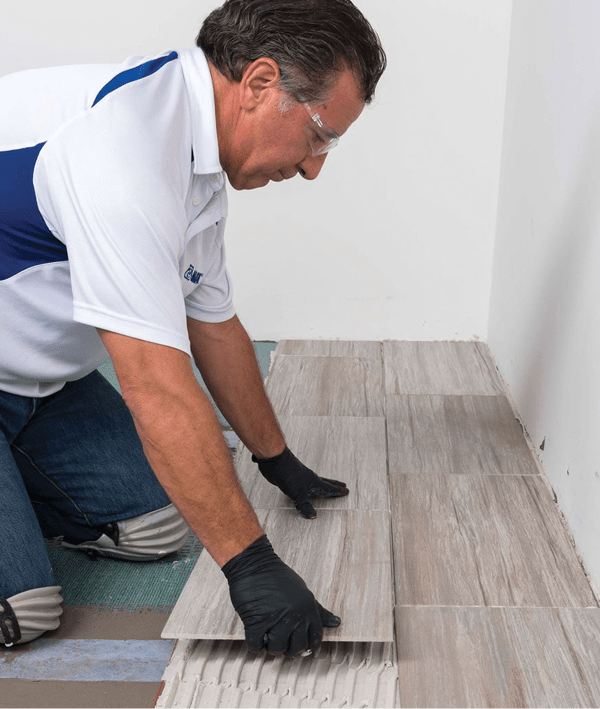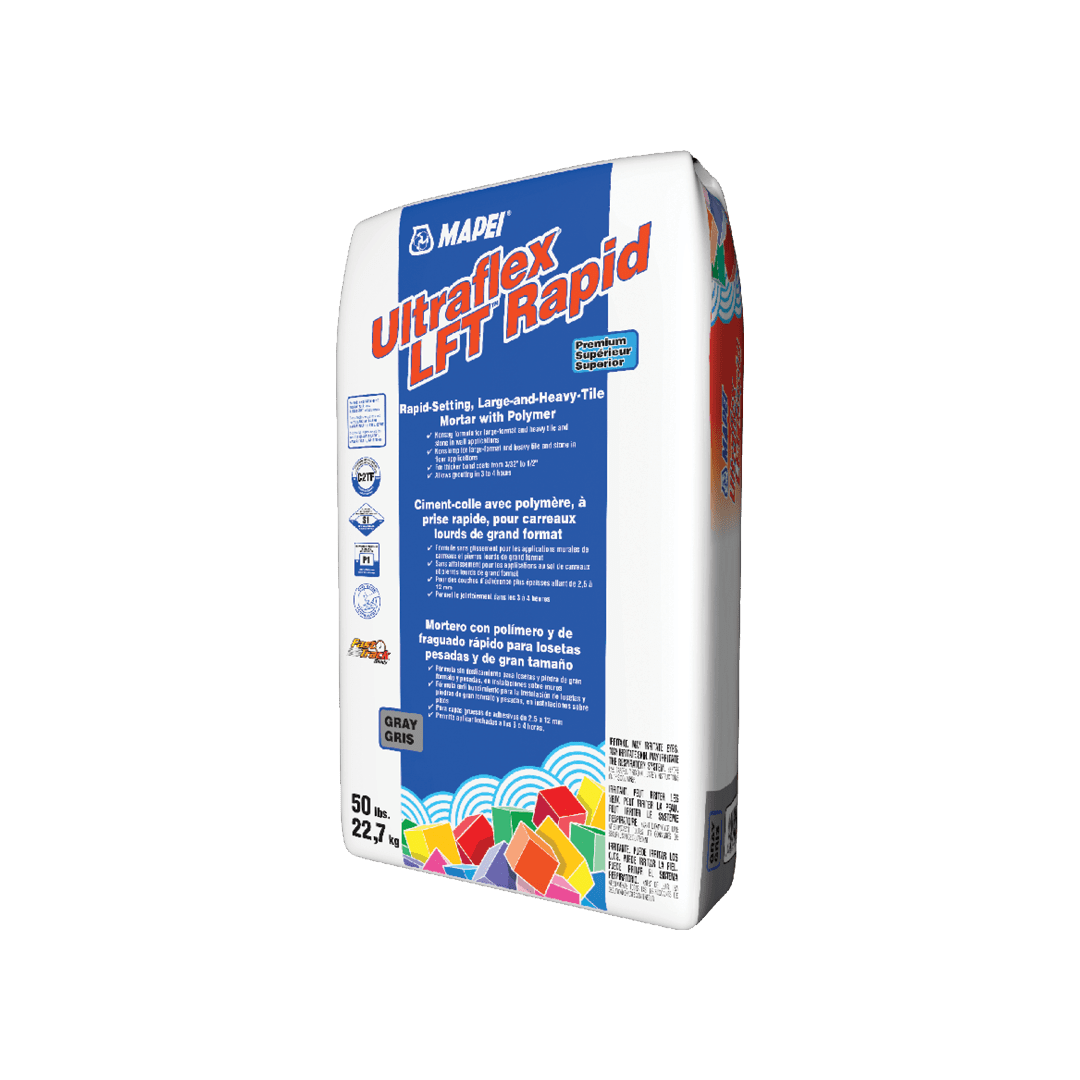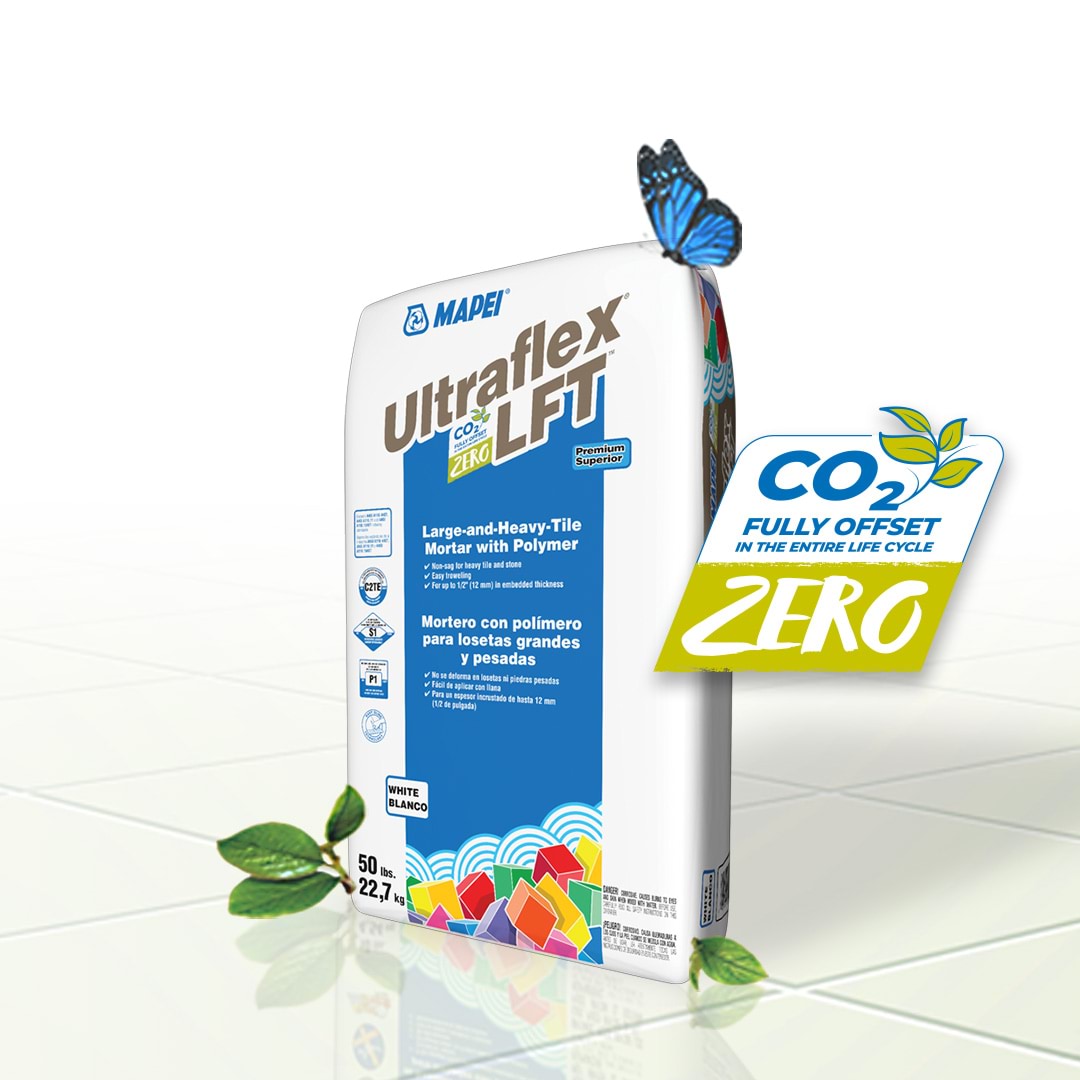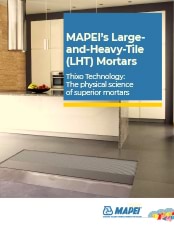 For thousands of years, tiles were a few inches across because those sizes were easiest to make and fire in a traditional kiln. As recently as the 1980s, 8" x 8" (20 x 20 cm) floor tiles and 4" x 4" (10 x 10 cm) wall tiles remained commonplace.
For thousands of years, tiles were a few inches across because those sizes were easiest to make and fire in a traditional kiln. As recently as the 1980s, 8" x 8" (20 x 20 cm) floor tiles and 4" x 4" (10 x 10 cm) wall tiles remained commonplace.
The introduction of the roller-hearth kiln changed all of that. There was no longer a size restriction on how large a tile could be fired, and manufacturers raced to make tiles larger to meet changing consumer preferences for interior and exterior floors, shower walls, and more. Today, floor tile dimensions of 12" x 24" (30 x 61 cm), 8" x 36" (20 x 91 cm), and even 24" x 48" (61 x 122 cm)" are common. Smaller tiles are easier to install with a thin layer of mortar. Large format tiles (tiles larger than 15" [38 cm] long on any side) and heavy tiles (such as a natural stone tile that weighs more than 5 pounds per square foot [2.27 kg per 0.093 m²]) caused installation products manufacturers to develop new products and methods that could be troweled thicker.
Small tiles are typically set with thinset mortars. The Tile Council of North America (TCNA) defines thinset as “...a blend of cement, very finely graded sand, and a water retention compound that allows the cement to properly hydrate.”
Tile set by the thinset method is adhered to the substrate with a thin layer of “thinset” cement. This type of cement is designed to adhere well in a thin layer - typically not greater than 3/16" (4.5 mm) thick. Tile substrates are allowed 1/8" (3 mm) of variation from one area to another (and typically have more than that). Large tile is allowed almost 1/8" (3 mm) of bow from the edges to the middle. Adding those together, you realize that there can be almost 1/4" (6 mm) of gap which can't be filled with 3/16" (4.5 mm) of mortar.
In contrast to an unmodified mortar, this type of mortar is designed to do two things well: be applied thicker and not to shrink much while it cures. The first part of this equation requires the mortar to be thixotropic. While they are being troweled or the tile is being adjusted, the mortar acts like a liquid. Once the movement has stopped, it acts like a solid, holding the tile in place -either on vertical (see photo) or horizontal surfaces.
You can think of this like ketchup - shake the bottle and it moves; stop shaking and it doesn't. By tinkering with the chemistry of the mortar, we can adjust its thixotropic behavior. Once thixotropy is holding the tile in place, it needs to stay there while it cures to avoid lippage. This is done by including ingredients in its formulation that reduce shrinkage during curing.
The product Technical Data Sheet references ANSI and ISO designations for that mortar. If the designation contains a “T” the product is Thixotropic and satisfies part 1 of the above. For example, our Ultraflex LFT polymer-modified mortar achieves a A118.15T rating.
In 2019, ANSI also began publishing standards that include an "H" rating for mortars that satisfy part 2 of the above. These mortars have been tested to produce minimal lippage when used with large and heavy tiles. In the past these have been called “medium bed mortars” but that terminology has since been replaced with “Large and Heavy Tile Mortars.”
If you are interested in more information about MAPEI's thixotropic mortars, please see our brochure or contact us to discuss the proper mortar selection for your situation.



Toll-free within Canada:
Technical Services at 1-800-361-9309
Customer Service at 1-800-668-1212
Copyright © 2025 MAPEI Inc. All rights reserved.
2900, avenue Francis-Hughes, Laval (Québec) H7L 3J5

Comments
Load more comments